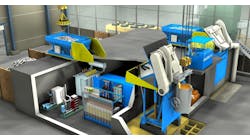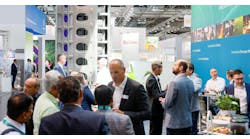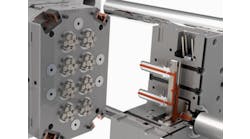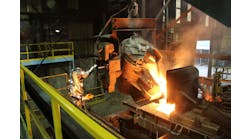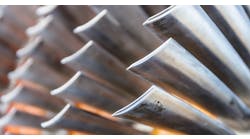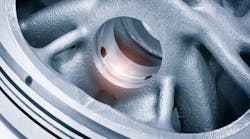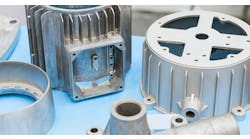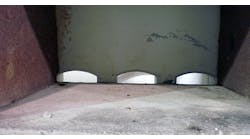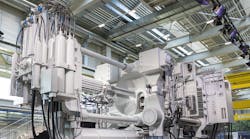High-pressure diecasting technology developer Bühler AG recently announced it had agreed on a strategic minority investment in Swedish metals company Comptech Rheocasting AB. As part of its goal to ramp up its rheocasting and diecasting operations, Bühler said it would also build a "complete rheocasting demo and test cell" in its Die Casting Application Center in Switzerland.
Interest in rheocasting, a melt preparation process for high-pressure diecasting, or HPDC, is growing among auto-parts suppliers seeking to make larger and lighter parts for electric vehicles in “megacasting” or “gigacasting” operations. As of 2023, Toyota Motors, General Motors, Hyundai and Volvo all anticipate including megapress technology in their electric-vehicle assembly lines, and Tesla Motors is notable for already doing so.
In June, Bühler introduced its own new megacasting package, the 160-square meter Carat 840 machine, capable of injecting more than 200 kg of molten aluminum into a die “within milliseconds,” to form large-dimension castings for automotive structures. Rheocasting is seen as a supporting process technology. Bühler's Comptech announcement came a few weeks later, on August 15.In a company statement, Markus Hofer, Bühler Advanced Materials’ Head of Business Development, took note of automakers’ increased interest in the process: “The foundry and automotive industries are engaging intensively in megacasting. To meet the required yield and quality targets the die-casting ecosystem needs to further develop hardware, cell automation and process technology,” he said. “We consider rheocasting an essential enabling technology—for this we are happy to partner with Comptech.”
Instead of pouring liquified aluminum into a mold, rheocasting—the prefix, “rheo-,” is Greek for “flow” or “current”—uses aluminum cooled to precise temperatures into what Salzburger Aluminum Group calls a “semi-solid state” or “slurry” with a high solid count. The aluminum slurry is then diecast at high pressures. That slurry is ideal for use in large hydraulic HPDC presses—like Bühler’s Carat 840—which use the material to make durable, lightweight, ductile, low-defect parts that may include thick and thin walls in the same pieces.
The light weight of rheocast aluminum parts is particularly appealing to automakers currently modifying their designs to reduce weight in electric vehicles, to improve efficiency and range. Rheocast aluminum parts can also be made with more precise details, eliminating machining and speeding up assembly lines. In more practical terms, rheocasting is seen as a technique for casting a wider range of alloys than may be possible with HPDC, with low levels of porosity and more options for welding and heat treating the finished components.The “megacasting” Hofer mentions is a related automotive innovation. The increasing size and precision of parts possible with large high-pressure diecasting machines is allowing automakers to produce multiple car components as a single, larger casting, reducing the amount of welding and time required to assemble the car, as well as lower CO2 equivalent emissions.
The expectation that rheocasting can make megacasting more applicable to automotive component design and production will give those auto manufacturers an additional reason to consider Bühler’s HPDC technology.
